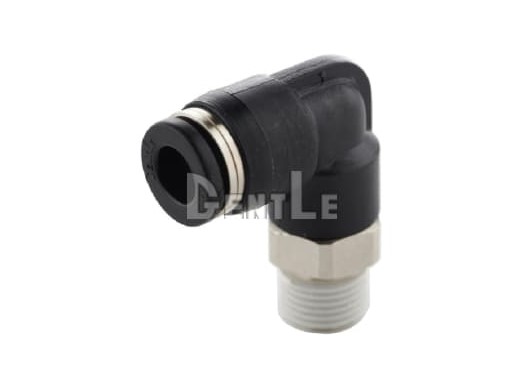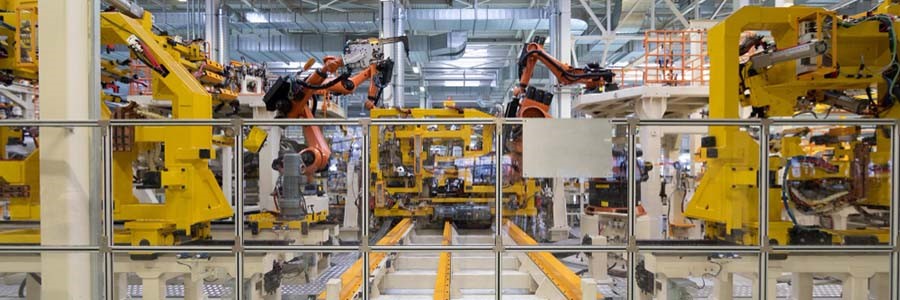What's a Pneumatic Fitting? A Quick 3-Minute Guide on Specs, Types, and Applications
In the industrial world, pneumatic fittings are essential components in manufacturing and technology. But have you ever wondered exactly what a pneumatic fitting is? This article breaks down its specifications, types, and common uses so you can understand why it's such a crucial part of modern production. Pneumatic fittings aren't just vital for making connections—they also represent efficiency, offering simple and reliable solutions across a wide range of applications.
Table of Contents
So, What's a Pneumatic Fittings?
Also known as an air-compression quick-connect fitting, a pneumatic fitting is a vital connector used in industries such as manufacturing, machinery, and technology. With its smart design, it enables quick connection and disconnection of tubing without the need for any tools. As long as the gas or liquid isn't corrosive, these fittings ensure secure connections.

You'll find pneumatic fittings everywhere — from robotic arms to pneumatic tools — helping reduce downtime and increase efficiency.
Pneuamtic Fittings v.s Standard Couplings
There are several key differences between pneumatic fittings and standard couplings:
| No. | Differences | Pneumatic Fittings | Standard Couplings |
| 1 | Connection Method | These allow for fast connection and disconnection without any extra tools. | These typically require screws, nuts, or other special tools to connect and disconnect. |
| 2 | Operational Efficiency | They save time and reduce labor costs, making your workflow more efficient. | These tend to be more cumbersome, which can slow down opereations. |
| 3 | Environmental Protection | Often designed with leak-proof mechanisms to prevent oil or gas from escaping. | The connection process can potentially cause oil or gas leaks. |
7 Common Applications for Pneumatic Fittings
Here's where pneumatic fittings are commonly used:

Pneumatic fittings are also commonly found in automated machinery, fixtures, and equipment around robotic arms.
- Industrial Automation:Connecting various cylinders and automation systems to increase production efficiency.
- Automotive Manufacturing:Used in pneumatic braking systems, automated assembly lines, and semi-manual air-pressure systems to keep vehicle production running smoothly.
- Electronics:Essential for precise, compact connections in semiconductor manufacturing equipment and electronic components.
- Chemical Industry:Used to transport liquids and gases, ensuring chemical processes proceed smoothly.
- Medical Field:Provide safe and rapid connections in medical equipment and gas systems.
- Construction Engineering:Connect building systems like pipelines and HVAC installations.
- Food Processing:Employed in food production lines for automation and cleaning operations.
5 Key Benefits of Pneumatic Fittings
1. Saves Time and Labor (Quick Installation & Removal)
Their easy-use design significantly reduces the time and labor needed for connection and disconnection.
2. Reduces Energy Waste
The one-way valve design seals the circuit, preventing oil (in low-pressure systems) or gas from leaking, which helps reduce energy waste.
3. Environmental Protection
The leak-proof design helps prevent oil or gas from contaminating the envioronment during connection and disconnection.
4. Easy Transportation and Assembly
For larger equipment or hydraulic tools, pneumatic fittings allow you to disassemble parts for transport and reassemble them at the destination, cutting both transportation costs and risks.
5. Economic Benefits
All of these advantages — cost savings, improved efficiency — result in significant value for production. For example, the MIT in-house brand GENTLE series pneumatic fittings offer high quality at competitive prices.
Whether it's a busy production line or cutting-edge technology, this small yet vital component—the pneumatic fitting—plays a major role in modern industry. For optimal performance, it's recommended to go with Taiwan-made products like those from GATO Automatic Co., Ltd., which offer great value and top-quality performance. With their smart design and wide range of applications, pneumatic fittings ensure a faster, more efficient future.
Further Reading:
What's a Pneumatic Quick-Connect Fitting? A Comprehensive Guide to Materials & Installation Methods!
Pneumatic Fitting Specifications and Types: How to Choose the Right One & Discover Its Benefits!